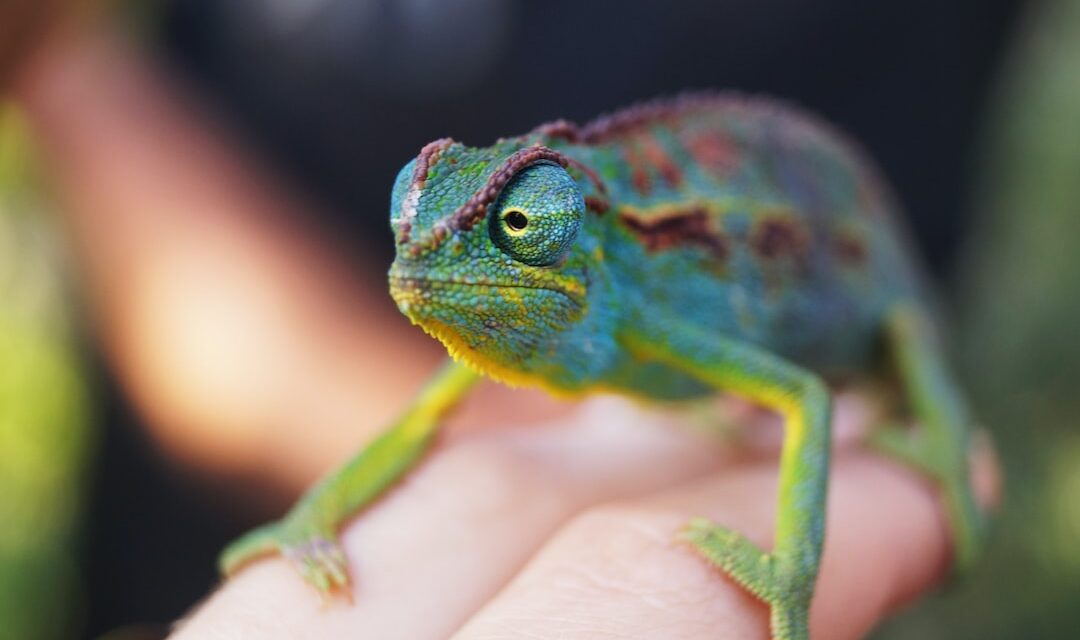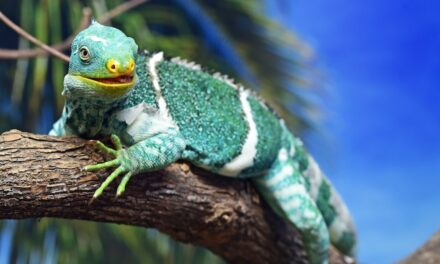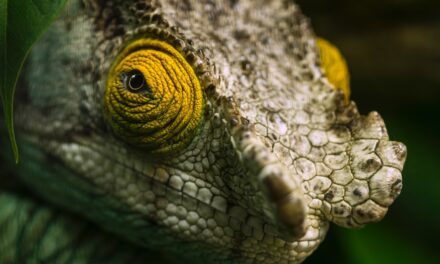Chameleons are fascinating creatures that have become popular pets for reptile enthusiasts. With their unique ability to change color and their intriguing behavior, chameleons make for interesting and captivating pets. However, it is important to understand that chameleons require specific care in order to thrive in captivity. Providing proper care for chameleons is essential for their health and well-being.
Understanding the Basic Needs of Chameleons
In order to provide proper care for chameleons, it is important to understand their natural behavior and habitat. Chameleons are arboreal reptiles, meaning they spend most of their time in trees. They have specialized feet and tails that allow them to grip onto branches and climb with ease. Chameleons are also known for their ability to change color, which they use for communication and camouflage.
When it comes to their basic needs, chameleons require specific temperature and humidity levels in order to thrive. Chameleons are ectothermic, which means they rely on external sources of heat to regulate their body temperature. It is important to provide a temperature gradient within the enclosure, with a basking spot that reaches around 85-90 degrees Fahrenheit (29-32 degrees Celsius) and a cooler area around 70-75 degrees Fahrenheit (21-24 degrees Celsius).
In terms of humidity, chameleons require higher levels than many other reptiles. The humidity level should be around 50-70%, with occasional spikes up to 80% during misting or rain cycles. This can be achieved by misting the enclosure several times a day and providing live plants that help maintain humidity.
In terms of diet, chameleons are insectivores, meaning they primarily eat insects. It is important to provide a varied diet that includes a variety of insects such as crickets, mealworms, and waxworms. Gut-loading the insects with nutritious foods and dusting them with calcium and vitamin supplements is also crucial to ensure that the chameleon receives all the necessary nutrients.
Choosing the Right Enclosure for Your Chameleon
When selecting an enclosure for your chameleon, there are several factors to consider. The size of the enclosure is important, as chameleons require vertical space to climb and move around. A general rule of thumb is to provide at least twice the height of the chameleon in the enclosure.
The material of the enclosure is also important. Glass enclosures are commonly used for chameleons as they provide good visibility and retain heat well. However, it is important to ensure proper ventilation to prevent stagnant air and humidity buildup. Screen enclosures are another option, as they provide better airflow but may require additional heating to maintain proper temperature levels.
Setting Up the Perfect Lighting and Heating System
Proper lighting and heating are crucial for the health and well-being of chameleons. Chameleons require UVB lighting in order to synthesize vitamin D3, which is essential for calcium metabolism. It is important to provide a UVB light source that covers at least two-thirds of the enclosure and replace it every six months to ensure optimal output.
In addition to UVB lighting, chameleons also require a heat source to maintain their body temperature. This can be achieved through the use of a heat lamp or ceramic heat emitter. The basking spot should reach around 85-90 degrees Fahrenheit (29-32 degrees Celsius), while the cooler area should be around 70-75 degrees Fahrenheit (21-24 degrees Celsius).
Selecting the Best Substrate for Your Chameleon
When it comes to substrate options for chameleon enclosures, it is important to consider hygiene and safety. Many chameleon owners opt for a bare-bottom enclosure, as it is easy to clean and reduces the risk of impaction from ingesting substrate. However, some owners choose to use natural substrates such as coconut fiber or sphagnum moss, which can help maintain humidity levels.
Providing the Right Humidity Levels for Your Chameleon
Maintaining proper humidity levels is crucial for the health and well-being of chameleons. Chameleons require higher humidity levels than many other reptiles, as they come from tropical and subtropical regions. Misting the enclosure several times a day can help maintain humidity levels, as well as providing live plants that release moisture into the air.
Creating a Suitable Diet for Your Chameleon
A balanced and varied diet is essential for the health of chameleons. In addition to a variety of insects, it is important to provide gut-loaded prey that has been fed a nutritious diet. Dusting the insects with calcium and vitamin supplements is also crucial to ensure that the chameleon receives all the necessary nutrients.
Offering the Right Water Source for Your Chameleon
Chameleons require access to clean water in order to stay hydrated. It is important to provide a water source that is easily accessible and regularly cleaned. Some chameleon owners choose to use a dripper system or misting system to provide water, while others opt for a shallow dish that is changed daily.
Decorating Your Chameleon’s Habitat
Creating a stimulating environment is important for the mental and physical well-being of chameleons. Adding live plants to the enclosure not only provides hiding spots and climbing opportunities but also helps maintain humidity levels. It is important to choose non-toxic plants that are safe for chameleons.
Maintaining a Clean and Healthy Environment for Your Chameleon
Regular cleaning and maintenance are essential for keeping your chameleon’s habitat clean and healthy. This includes removing any feces or uneaten food, cleaning the water source, and regularly disinfecting the enclosure. It is also important to monitor the temperature and humidity levels to ensure they are within the appropriate range.
Monitoring Your Chameleon’s Behavior and Health
Observing your chameleon’s behavior and health is crucial for early detection of any issues. Signs of illness or stress in chameleons can include loss of appetite, lethargy, weight loss, changes in coloration, and respiratory issues. If you notice any concerning signs, it is important to consult a veterinarian who specializes in reptiles.
Providing proper care for chameleons is essential for their health and well-being. Understanding their basic needs, including temperature, humidity, diet, and lighting, is crucial for creating a suitable environment. Regular cleaning and maintenance, as well as monitoring their behavior and health, are also important aspects of chameleon care. Ongoing research and education are key for chameleon owners to stay updated on the best practices for providing proper care for these unique reptiles.










Recent Comments